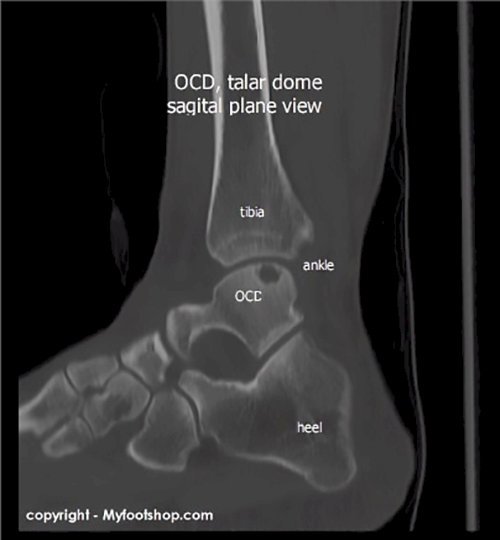

There is apparently a difference between male and female and regarding height, which should be taken into account when indicating a diagnosis 4. The medial clear space a horizontal distance of ≥4-5 mm has been considered abnormal 1-4 although there is criticism that the measurement is inaccurate and imprecise 2,6. This can be measured at the level of the talar dome (common) or 5 mm inferior to the talar dome 2,5. The medial clear space can be measured on the non-stressed and stressed ankle mortise views 2,5, as the widest distance between the lateral border of the medial malleolus and the medial side of the talus and is usually measured parallel to the superior talar articular surface 1-3. Complications of Talar Dome Lesionsĭepending on the amount of damage to the cartilage in the ankle joint, arthritis may develop in the joint, resulting in chronic pain, swelling and limited joint motion.The medial clear space is used in the prediction of deltoid ligament injury 1 and in conjunction with the tibiofibular clear space the tibiofibular overlap and the superior clear space in the diagnosis of syndesmotic injury 2,3. The surgeon will select the best procedure based on the specific case. A variety of surgical techniques is available to accomplish this. Surgery may involve removal of the loose bone and cartilage fragments within the joint and establishing an environment for healing. If nonsurgical treatment fails to relieve the symptoms of talar dome lesions, surgery may be necessary. Wearing an ankle brace may help protect the patient from reinjury if the ankle is unstable. Physical therapy may also include techniques to reduce pain and swelling. Range-of-motion and strengthening exercises are beneficial once the lesion is adequately healed. Nonsteroidal anti-inflammatory drugs (NSAIDs), such as ibuprofen, may be helpful in reducing the pain and inflammation. During this period of immobilization, nonweightbearing range-of-motion exercises may be recommended. Depending on the type of injury, the leg may be placed in a cast or cast boot to protect the talus. If the lesion is stable (without loose pieces of cartilage or bone), one or more of the following nonsurgical treatment options may be considered:

Treatment depends on the severity of the talar dome lesion. X-rays are taken, and often an MRI or other advanced imaging tests are ordered to further evaluate the lesion and extent of the injury. Sometimes the surgeon will inject the joint with an anesthetic (pain-relieving medication) to see if the pain goes away for a while, indicating that the pain is coming from inside the joint. To diagnose this injury, the foot and ankle surgeon will question the patient about recent or previous injury and will examine the foot and ankle, moving the ankle joint to help determine if there is pain, clicking or limited motion within that joint. Episodes of swelling of the ankle-occurring when bearing weight and subsiding when at restĪ talar dome lesion can be difficult to diagnose because the precise site of the pain can be hard to pinpoint.A sensation of the ankle locking or giving out.An occasional clicking or catching feeling in the ankle when walking.Chronic pain deep in the ankle-typically worse when bearing weight on the foot (especially during sports) and less when resting.The signs and symptoms of a talar dome lesion may include: Unless the injury is extensive, it may take months, a year or even longer for symptoms to develop. Sometimes a broken piece of the damaged cartilage and bone will float in the ankle. If the cartilage does not heal properly following the injury, it softens and begins to break off. Talar dome lesions are usually caused by an injury, such as an ankle sprain. “Osteo” means bone and “chondral” refers to cartilage. It is also called an osteochondral defect (OCD) or osteochondral lesion of the talus (OLT). A talar dome lesion is an injury to the cartilage and underlying bone of the talus within the ankle joint. The top of the talus is dome-shaped and is completely covered with cartilage-a tough, rubbery tissue that enables the ankle to move smoothly. The ankle joint is composed of the bottom of the tibia (shin) bone and the top of the talus (ankle) bone. Talar Dome Lesion What Is a Talar Dome Lesion? Please enable Javascript in your browser. Javascript is required to view the content on this page.


 0 kommentar(er)
0 kommentar(er)
